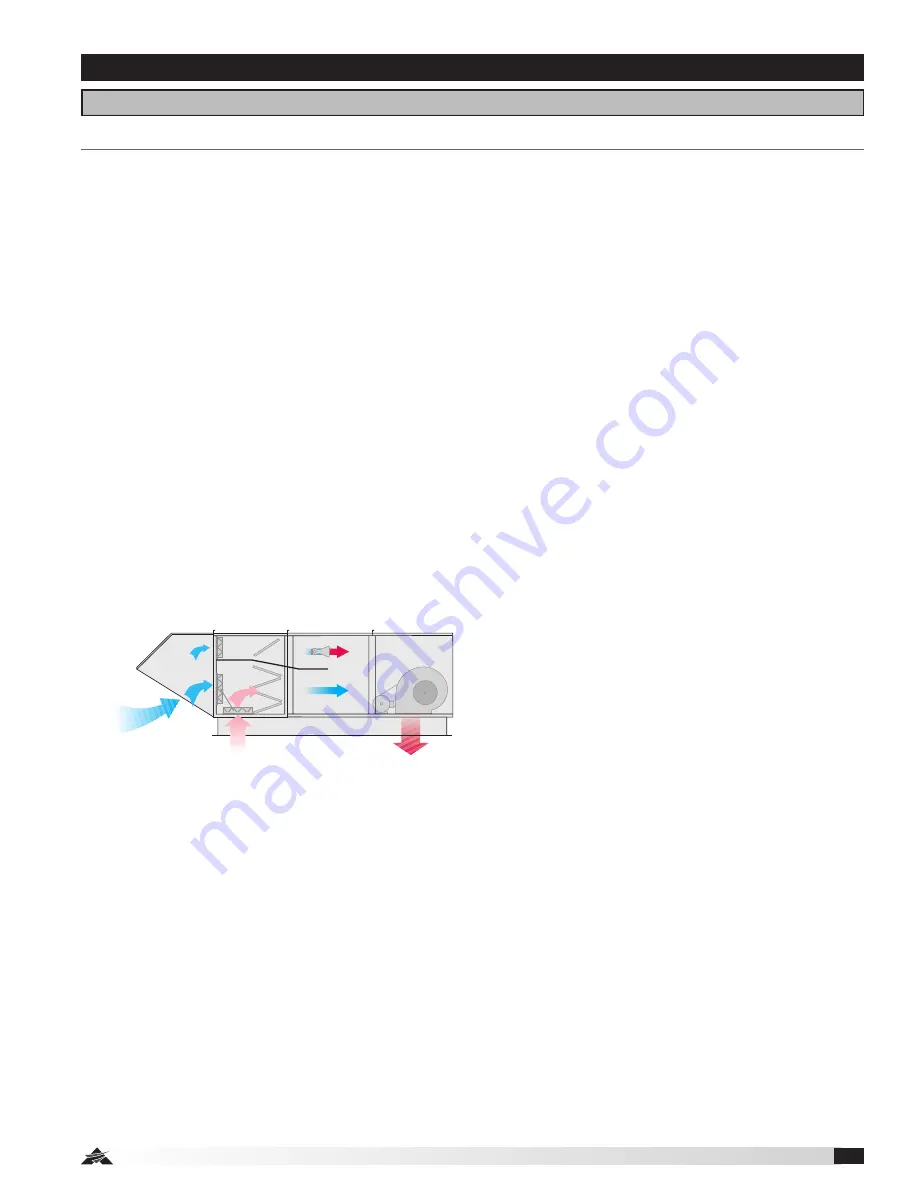
Direct Gas Make-Up Air
37
Start-Up: Direct Gas-Fired Heating
Optional Features
There are two important design features that must be
maintained by recirculating direct fired equipment.
Recirculated air cannot be passed over the burner
and airflow across the burner must remain constant
throughout the range of recirculation. These units with
recirculation meet both of these requirements and are
able to operate with up to 80% recirculated air.
Recirculation with Filtered Return Air
Model XDGX is available with a recirculation design
that includes integral filtration of the recirculated air. In
this design, the inlet portion of the unit is divided into
two airstreams. The upper airstream carries 20% of
the total supply volume. This air enters the unit through
a damper, passes through filters, and then across the
burner where it is heated. The other 80% of the supply
air passes through the lower airstream which includes
a mixing box that controls the ratio of recirculated
and outside air that is introduced. The air in the lower
airstream passes through filters and is mixed with the
heated outside air that passed across the burner. A
bypass baffle is located under the burner in the bypass
airstream to allow adjustment of the percentage of total
supply air that is permitted to bypass the burner. This
baffle may need to be adjusted to achieve a proper
burner pressure differential.
Supply Air
Outside Air
(100-20%)
20%
80-0%
Recirculated Air
(0-80%)
Burner Pressure Differential Check
The burner pressure differential on direct fired units
with recirculation is affected by total airflow and the
percentage of airflow that is passing over the burner.
If too much air is allowed to bypass the burner, the
burner pressure differential will be too low. If too little
air is allowed to bypass the burner, the burner pressure
differential will be too high.
Reference the
Start-Up:
Direct Gas-Fired Heating,
All Units
section in this Installation, Operation and
Maintenance Manual for more information about
measuring burner pressure differential and adjusting
burner baffles. Before making any adjustments to the
burner baffles on a unit with recirculation, measure the
burner pressure differential with the recirculation damper
fully closed and again with the recirculation damper fully
open. The burner pressure differential will vary slightly
as the percentage of recirculated air varies. Verify that
the burner pressure differential is in the correct range
throughout the operating range of the recirculation
damper:
• Natural Gas: 0.5 to 0.8 in. wg
• Liquid Propane (LP) Gas: 0.7 to 1.0 in. wg
If adjustment is necessary, adjust the fan RPM via
adjustable motor sheaves (if equipped) or sheave
replacement to achieve proper burner pressure drop.
Motor amp draw must not exceed full load amperage
(FLA) on motor nameplate. If fan RPM cannot be
adjusted or proper burner pressure differential cannot
be achieved by adjusting fan RPM, adjust the baffle
located over the recirculated air damper (non-filtered
recirculation) or the baffle located under the burner in
the bypass airstream (filtered recirculation). Adjusting
the recirculated air damper baffles or bypass baffles
will adjust the percentage of air that is allowed to
bypass the burner. Close the baffle(s) to raise the
burner pressure differential. Open the baffle(s) to lower
the burner pressure differential. If the recirculated air
damper baffles or bypass baffle are adjusted as far
as they will go, adjust the baffles on either side of the
burner as necessary.
Recirculation Arrangements
















































